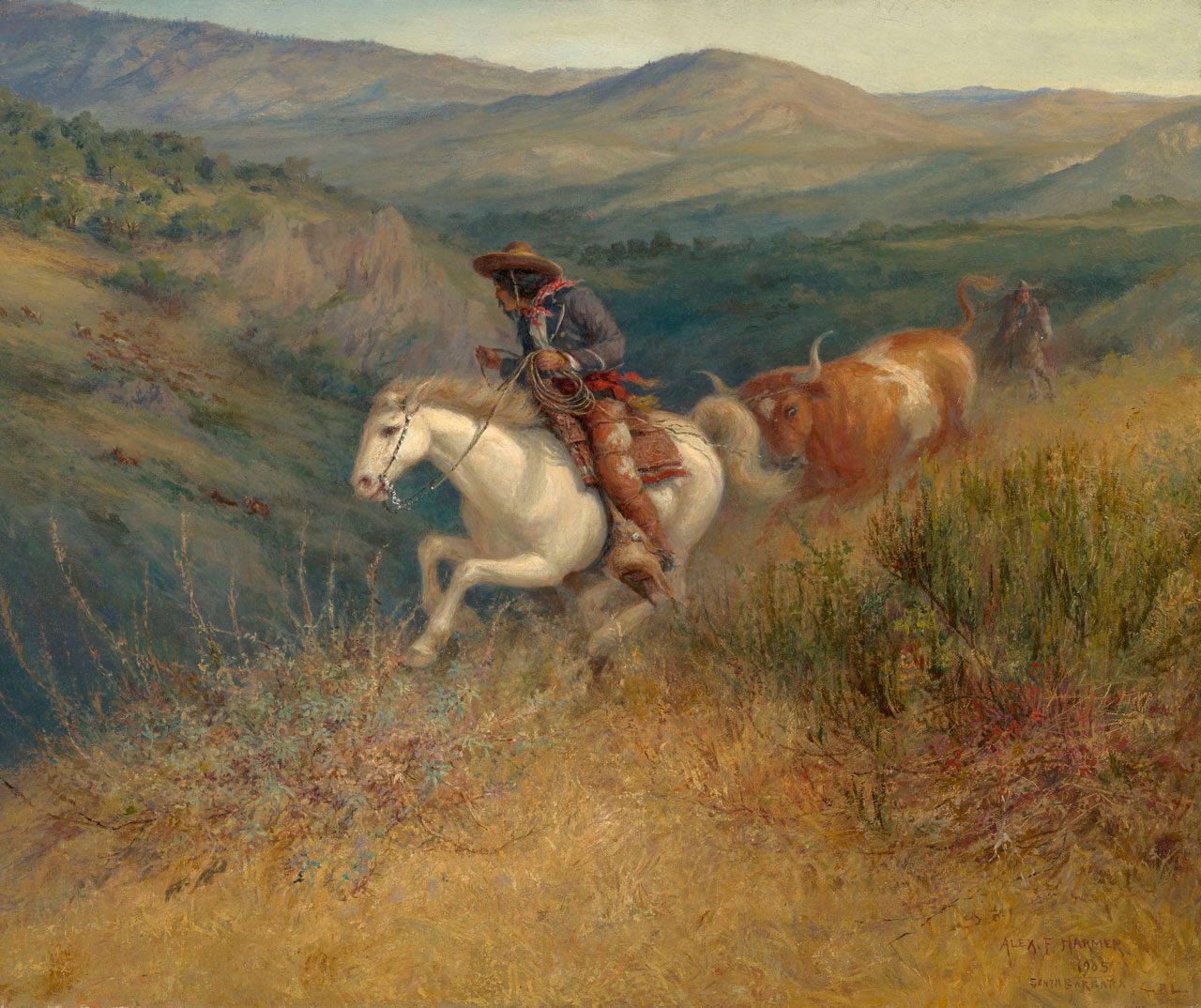Note
User Text: California became a northern province of Mexico following independence from Spain in 1821. As a consequence, the missions were secularized and their lands ended up in the hands of a few prominent Californio families who managed vast cattle-ranching estates. In Northern California most of these tracts were divided in the years following the Gold Rush. But in Southern California, where Alexander Harmer ultimately settled, vestiges of this earlier era remained until rail travel allowed the population to boom.
Born in Newark, New Jersey, Harmer left home at age 13 and spent three years in Nebraska before joining the army in Ohio. He was stationed in California for two years, but after being discharged returned east to study art at the Pennsylvania Academy of Fine Arts in Philadelphia with Thomas Eakins and later Thomas Anshutz. In 1881, he went west to paint. To get there, he re-enlisted in the Army and was assigned cavalry duty in Arizona. His expeditions and subsequent paintings of Geronimo and the Apaches garnered him the moniker Artist of the Apaches.
In the 1890s, Harmer settled in Santa Barbara and married into one of the area’s old Spanish families. His adobe home and gallery on De La Guerra Plaza had been a public gathering place and festival area since California’s Mexican era. These circumstances inspired him to paint romanticized genre scenes for a public eager to rediscover California’s past.
